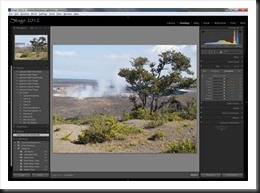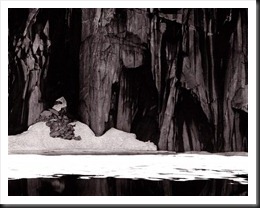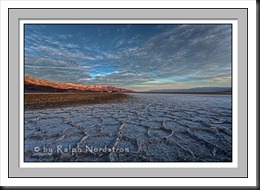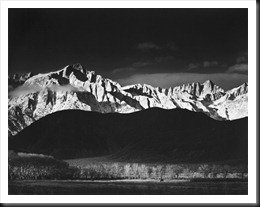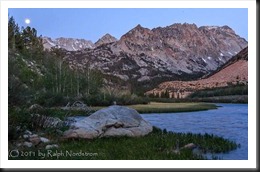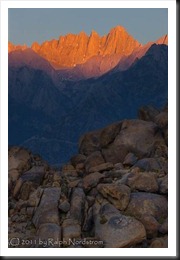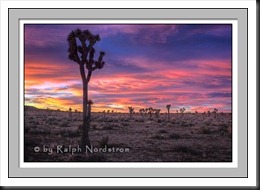A continuing series of posts inspired by Ansel Adams’ book “Examples – The Making of 40 Photographs.” In this post, the 1932 photograph “Alfred Stieglitz: An American Place.”
I’m continuing my journey through this marvelous book, “Examples – The Making of 40 Photographs” by Ansel Adams. It’s a fascinating experience. Much of the legacy of Ansel Adams is distorted these days because of all the hype about him in the press. But to read the master’s own words is inspiring and refreshing.
Alfred Stieglitz, An American Place
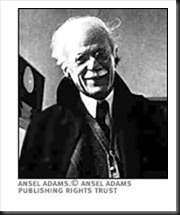
I could only find this tiny rendition of the photograph Adams discusses in his book. So I apologize for the quality. But the story is the important thing.
Adams’ main cameras were large view cameras. I have two 8X10 prints of his hanging in our home, contact prints made directly from 8X10 negatives. In fact, most photographers of the time (1932) photographed with large format cameras and their prints were contact prints. Photographers that used enlargers were extremely rare.
This photograph of Stieglitz was taken with an amazing new device, a Zeiss Contax 35mm camera. It was taken when Adams visited Stieglitz’s gallery in New York to show some of his photographs to the one most people considered the finest photographer in the country. Stieglitz was impressed and arranged for Adams to have a one person show.
Adams commented on his experiences using a small camera which sounds very similar to today’s comments regarding digital SLRs.
“Small cameras make pictures far more immediate; and many negatives could be made in the time required to produce one with a sheet-film camera. The technique of 35mm photography appears simple, yet it becomes very difficult and exacting at the highest levels. One is beguiled by the quick finder-viewing and operation, and by the very questionable inclination to make may photographs with the hope that some will be good…. The best 35mm photographers I have known work with great efficiency, making every exposure with perceptive care….”
One can substitute ‘DSLR’ for ‘small camera’ and the statement rings just as true today.
Having photographed in the past with a 4X5 camera I know the slow, exacting deliberation it takes and often think that this is a desirable approach with my Canon 1Ds Mark III and even my Canon G11. The latter especially is great for spontaneous photography. Setting up the Mark III is a much more deliberate process but not like setting up a 4X5. I like to encourage my workshop students to slow down, connect with the land and then try to capture what they are feeling. You don’t get this from chasing after as many captures as you can find.
I was standing next to a large format photographer on ‘The Bridge” in Zion National Park at sunset. He was shooting 8X10 color film. I asked him how much it cost to press the shutter. He replied, “$35.” The light didn’t happen that time and he did not press the shutter. One of the beauties of digital photography is that it doesn’t cost us anything to press the shutter. But if it did, we would slow down and our photography would benefit from it.
In researching for this post I came across a letter by Ansel Adams that I must share with you. The letter was written to his good friend Cedric Wright. Adams had just come through a period where he was emotionally torn between passion for his beautiful lab assistant and commitment to his wife Virginia and their two children. He had a clarifying moment in Yosemite when he observed a glorious thundercloud over Half Dome, a moment in which he saw clearly the meaning of love, friendship and art. Here is what he wrote.
“Dear Cedric,
“A strange thing happened to me today. I saw a big thundercloud move down over Half Dome, and it was so big and clear and brilliant that it made me see many things that were drifting around inside of me; things that relate to those who are loved and those who are real friends.
“For the first time I know what love is; what friends are; and what art should be.
“Love is a seeking for a way of life; the way that cannot be followed alone; the resonance of all spiritual and physical things….
“Friendship is another form of love — more passive perhaps, but full of the transmitting and acceptances of things like thunderclouds and grass and the clean granite of reality.
“Art is both love and friendship and understanding: the desire to give. It is not charity, which is the giving of things. It is more than kindness, which is the giving of self. It is both the taking and giving of beauty, the turning out to the light of the inner folds of the awareness of the spirit. It is a recreation on another plane of the realities of the world; the tragic and wonderful realities of earth and men, and of all the interrelations of these.
“Ansel”
Join me on an upcoming workshop. Click here for more details.
To see more of my photographs click here.
WordPress Tags: Ansel,Adams,legacy,Stieglitz,American,Place,Photographers,Zeiss,Contax,gallery,SLRs,pictures,sheet film,technique,photography,exposure,DSLR,Canon 1Ds Mark III,photography workshop,Zion,National,Park,sunset,friend,passion,commitment,wife,Virginia,children,moment,Yosemite,Half,Dome,friendship,Here,Dear,friends,Love,life,resonance,grass,granite,self,world,earth,students,cameras,camera,photographer,digital,thundercloud
(2405)
Like this:
Like Loading...

